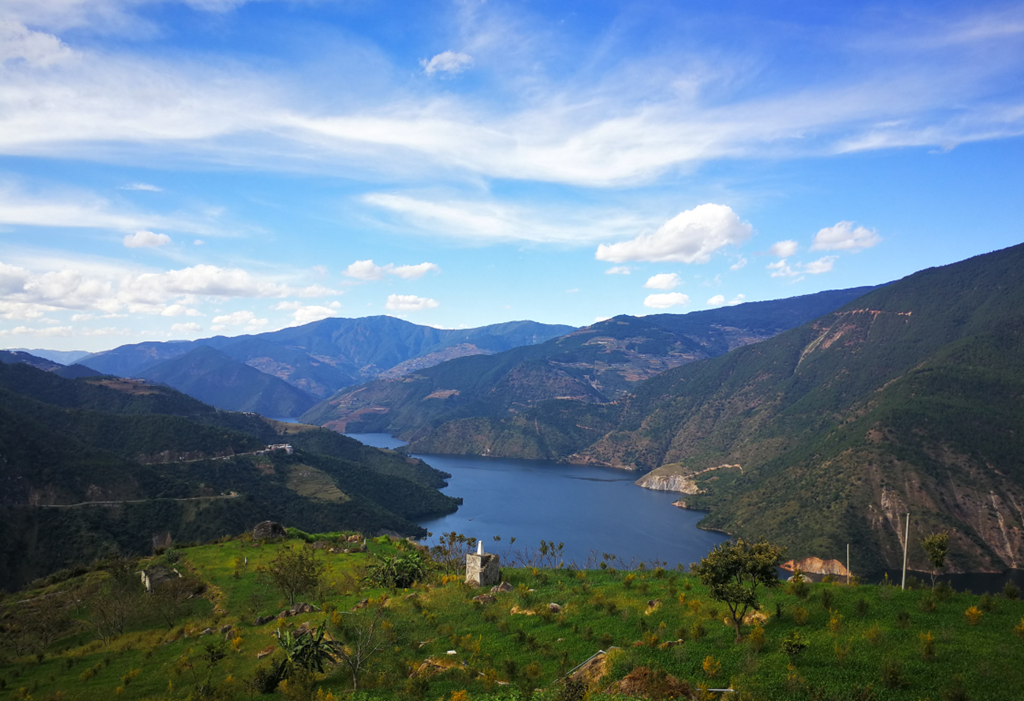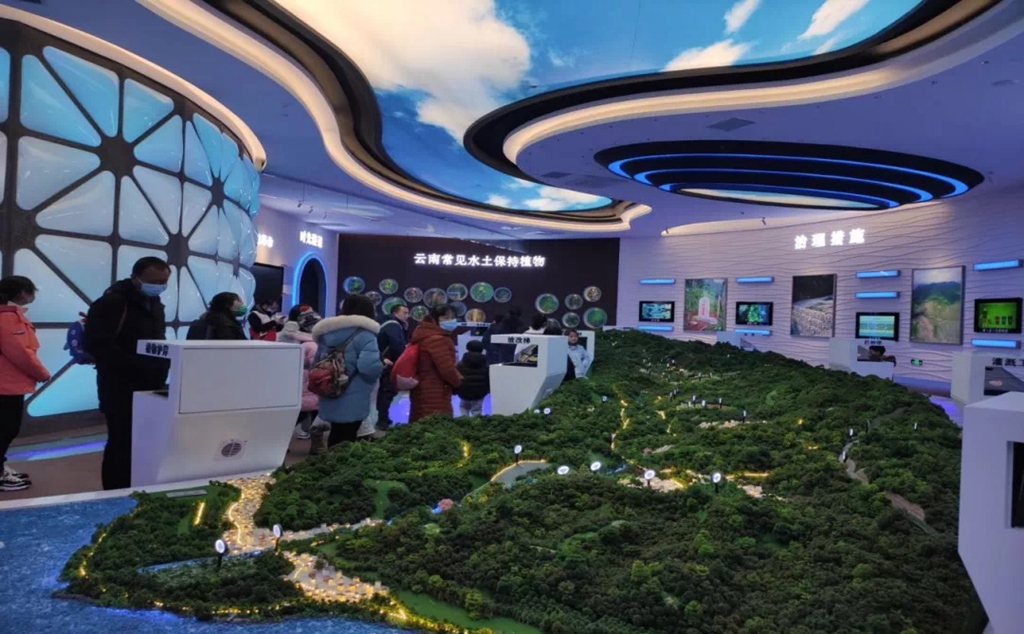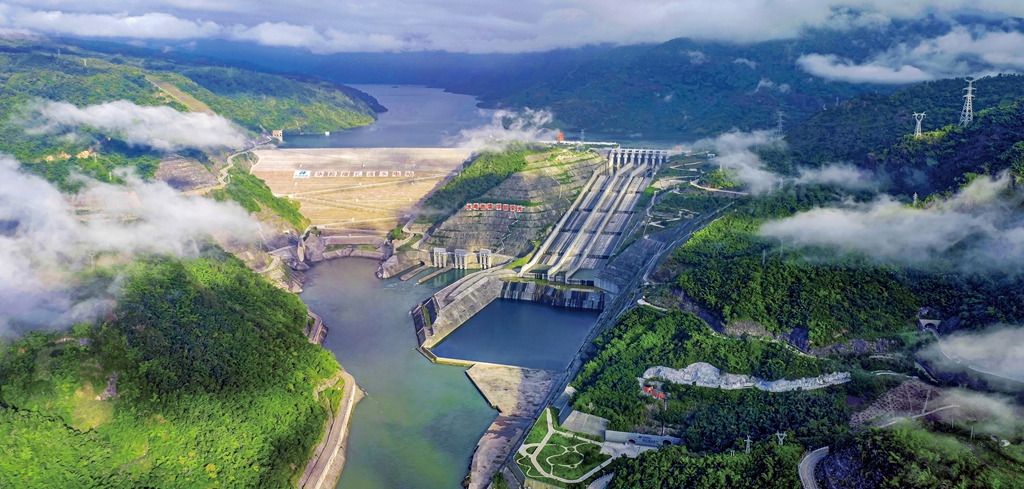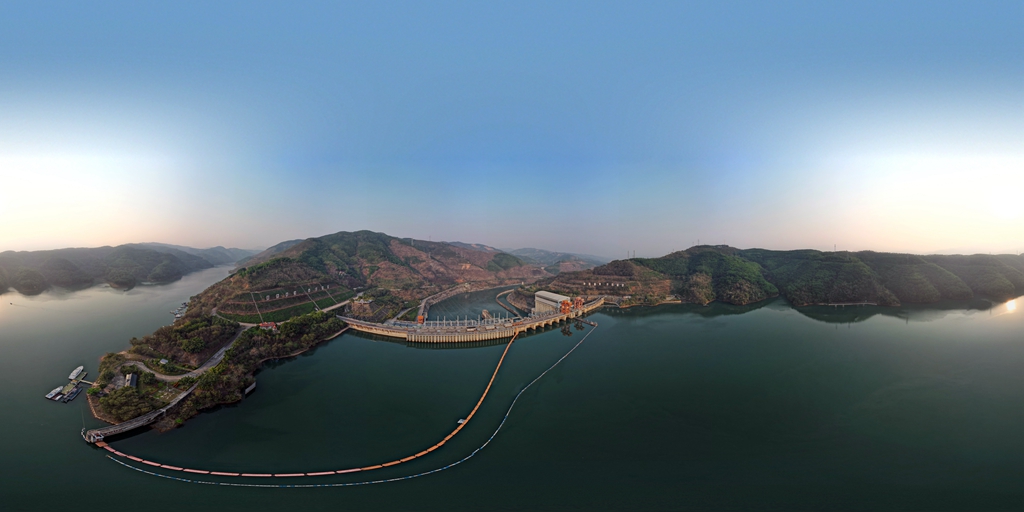Eric's Insight: Yunnan facilitates LMC water cooperation
Southwestern China’s Yunnan province has served as a facilitator for the Lancang-Mekong Cooperation (LMC) in water affairs since the LMC mechanism was incepted in 2016.

A Lancang river section is hidden in west Yunnan’s mountainous Nanjian county. File photo/Yunnan Daily
According to the Sanya Declaration, the Lancang-Mekong countries launched the Water Resources Cooperation Center in 2017, focusing on technical exchanges, capacity building, drought and flood management, data and information sharing and conducting joint research and analysis.
In 2019, the first Ministerial Meeting of Lancang-Mekong Water Resources Cooperation took place in Beijing, and in the following year China began sharing the Lancang hydrological data with the Mekong countries all year round, in a bid to better tackle climate change and natural disasters in the region.
China has a fine tradition in water management and conservation, as is shown in the story of the legendary emperor Da Yu, or Yu the Great. In Chinese mythology, Yu tamed the deadly flood, a feat his father had failed to achieve, and as a saviour-hero, he founded China’s oldest dynasty, the Xia.
In Yunnan’s neighboring province of Sichuan, the Dujiangyan project has been a typical case showing the Chinese wisdom in water conservancy. An ancient system for irrigation and flood control, Dujiangyan was originally constructed around 256 BC by the State of Qin, and it is still in use today.
As for the LMC in question, it is an international cooperative mechanism named after the Mekong river, with its upper reach called the Lancang river in China, and as Yunnan is directly connected with the three Mekong countries of Myanmar, Laos and Vietnam, the province has grown to be a major player for the LMC water cooperation.

The Kunming-based Baicaoyuan experiencing center for soil and water conservation is visited by environment volunteers. File photo by Long Zhou (Yunnan Daily)
During a recent international media tour on the Lancang-Mekong water resources cooperation, the Kunming-based Baicaoyuan experiencing center was in the spotlight, for it is a typical Yunnan example for water conservation, and its experiences are probably helpful to farmers in some Mekong areas.
The Yunnan experiences in soil and water conservation, the water-saving irrigation in particular, has been popularized throughout China, said a China News Service report. Under the backdrop of the Lancang-Mekong water resources cooperation, the Yunnan practices have been adopted in some areas of the Mekong river basin.
“We’re committed to water-saving studies for irrigating crops in the Lancang river basin, and we also joined hands with the Lancang-Mekong Water Resources Cooperation Center in applying for water projects under the United Nations Development Program,” said Wang Jie, director of the management office of Yunnan Academy of Water Sciences.
Given the distribution of river systems in the region, Yunnan is probably the most relevant province for LMC water cooperation. Through the Langcang-Mekong river, Yunnan makes a linchpin in linking western China with the five Mekong countries, and via the Nujiang-Salween river, the province is connected with Tibet and Myanmar.
What’s more, Yunnan itself is the right source of many international rivers. The Yuanjiang-Honghe river, or Yuan-Red river in short, has its source in west Yunnan’s Ailao mountains and flows into north Vietnam, while the Nam Ou river starts flowing from mountains in south Yunnan’s Jiangcheng county and meets the Mekong mainstream in Northern Laos.
Wang added that part of the projects involved the water-saving practices in irrigating major crops in the Lancang river basin. “In the future, we’re willing to share our experiences with the Mekong areas with similar climate condition and crop distribution, in a bid to aid locals in modern agriculture,” noted Wang.

An overview of the Nuozhadu hydro project in southwest Yunnan’s Puer city. File photo/Yunnan Daily
Putting water sciences into practice, the province has built up a few wonderful hydro projects on the Lancang-Mekong river, and thus contributed to local socioeconomic development, while providing solutions to regional water affairs.
Located in southwest Yunnan’s Puer city, the Nuozhadu hydro project not only serves as the country's important clean energy provider, but also takes up onus of helping downstream Mekong nations in easing their droughts and preventing them from deadly floods, said a Global Times report on Sept. 25.
Nuozhadu generates 23.91 billion kilowatt-hours per year, equating to power consumption of 9.56 million tons of coal and saving 18.77 tons of carbon emission per year, which is conducive to the Chinese national goal of peaking carbon emissions before 2030 and reaching carbon neutrality before 2060.
So far, Yunnan companies and their national peers have been active in helping the Mekong countries realize sustainable growth via efforts in water conservation. In northern Laos, the Name Ou hydropower projects are fueling local economy, while in Cambodia, hydro projects have been in sound operation for almost a decade because of the Chinese technical assistance.
When Mekong was suffering severe drought in 2019, the Yunnan hydropower stations, such as Xiaowan and Nuozhadu, cut down their water reservoir and reduced electric energy production, at the cost of huge economic profit, to increase water supply for the downstream countries, and help them abase the drought, added the report.
Actually, droughts in the Mekong river basin is largely caused by the El Niño phenomenon. When the Mekong countries were going through a drought unseen in 90 years and Vietnam asked for help in 2016, the hydropower stations in Yunnan increased water supply for 27 consecutive days and the countries' plight was greatly eased.
During an activity on the Lancang-Mekong water resources cooperation, which was held in Yunnan province from August 23 to 26, Zin Mar Htwe, Charge d'Affaires of the Myanmar Embassy in China, thanked the country for continuously sharing hydrological information with the Mekong countries, adding the Lancang-Mekong river flowing through six countries is a fortune for them.

An overview of the Jinghong hydro project in south Yunnan's Xishuangbanna prefecture. File photo/Yunnan Daily
Based on its experiences in LMC water cooperation, Yunnan could consider carrying out more water-related cooperative programs with Myanmar, Laos and Vietnam, given the natural international linkages of the Nujiang-Salween river, the Nam Ou river and the Yuanjiang-Honghe river, all closely related to the livelihood of people in the province and its neighboring countries. In this way, Yunnan will better live up to its due role in regional water cooperation.
(The writer Eric Wang Shixue is an English editor with the Mekong News Network based in Kunming, Yunnan province. The view in the article does not necessarily represent that of Yunnan Gateway.)








